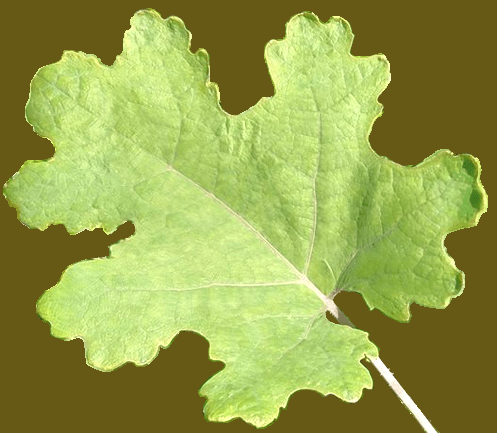
I took a few snapshots with my tablet and edited one so that only one leaf remains. My mind began to squeak out the beginnings of recall, with the single letter “p”. That’s all the further I got, so I contacted a plant identification site and was informed what it was.
A few weeks later, I visited the owner of the house and plants with the intent of informing him what the plant was (since he didn’t know either), when I realized the plant, with leaves about two inches in size, were now huge, with leaves close on to a foot in size!
I Had to Look Deeper
I have come to view everything in nature as having a purpose. Of that I am convinced. However, that purpose may not be immediately discernible. It may take time to learn what that purpose is.
So I looked plume poppy (Macleaya cordata) up. I found it contains a host of chemicals. Three of these have difficult-to-pronounce names: isoquinoline, dihydrosanguinarine, dihydrochelerythrine. But is that all plume poppy is good for, a source of “exotic compounds”?
In an article posted on Science Direct, listed in the references below, we read, “dihydrosanguinarine showed… potent leishmanicidal activities.” What kind of activities are these? Leishmaniasis is a horrible parasitic disease spread by certain types of sandflies.
And what of dihydrochelerythrine? Well, another Science Direct article’s title pretty much tells it all, ” Dihydrochelerythrine and its derivatives: Synthesis and their application as potential G-quadruplex DNA stabilizing agents”.
Why is it that such concepts somehow do not seem to define the purpose for the plume poppy? While such uses are fascinating and doubtless helpful in accomplishing something, they don’t fit in with the word purpose! Consider two alternatives…
Plume Poppy – The Alternatives
The first alternative is, we are subject to evolution. If the purpose of the plant was to provide relief from illness, how (and why) did the plants know how to evolve the solution? And, since they are not sentient, how could they achieve that goal?
The second alternative is, we are here on earth due to creation. But were we created to be ill, and the plants to heal us? This alternative is no better than the first.
The third alternative can be deduced from this Gardening Gone Wild quote,
“This is one gorgeous plant. You just have to put it in the right place.”
If we take the same perspective, plume poppy serves aesthetic purposes. If there is an additional purpose, which there may well be, we just don’t know what that is… yet.
Note: You might also enjoy What is it Good For? the Blood Sucking Mosquito
References:
- Nature.com: Biotransformation and tissue distribution of protopine and allocryptopine and effects of Plume Poppy Total Alkaloid on liver drug-metabolizing enzymes
- Gardening Gone Wild: Why I Love Using Plume Poppy in My Garden
- Science Direct: Photochemical and biological research of Chelidonieae pharmaceutical resources